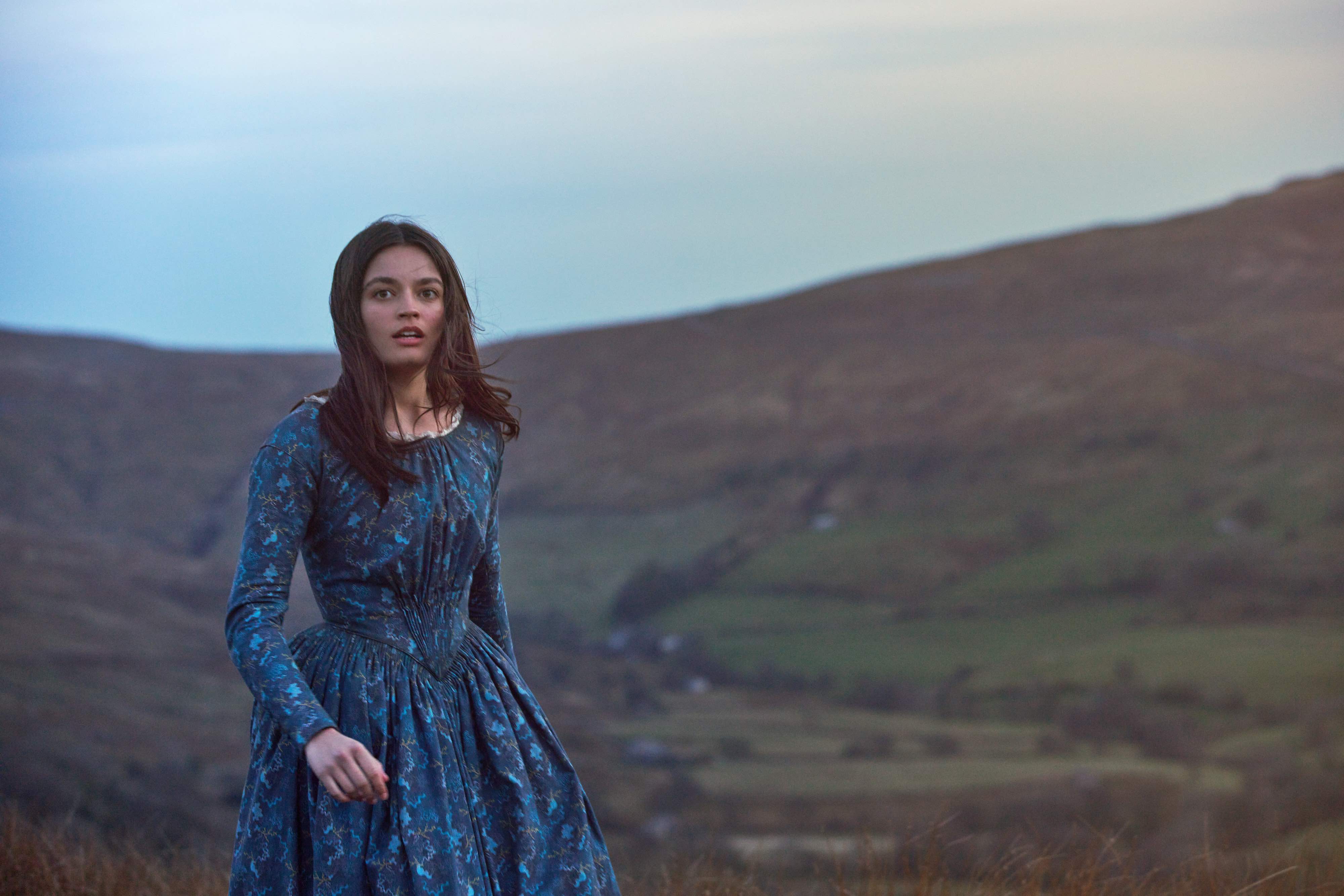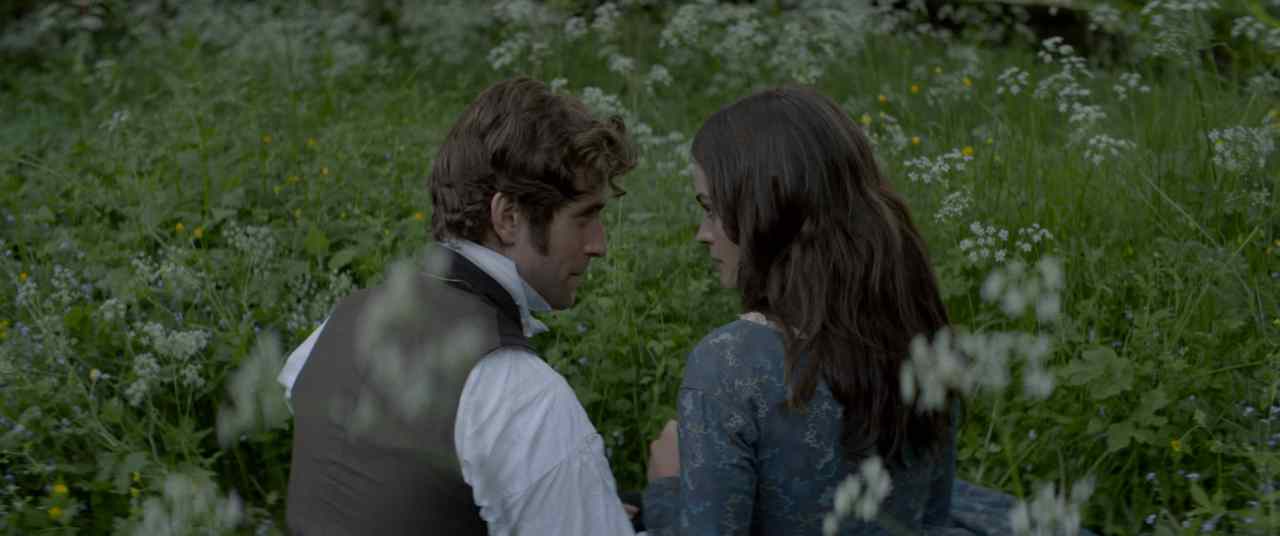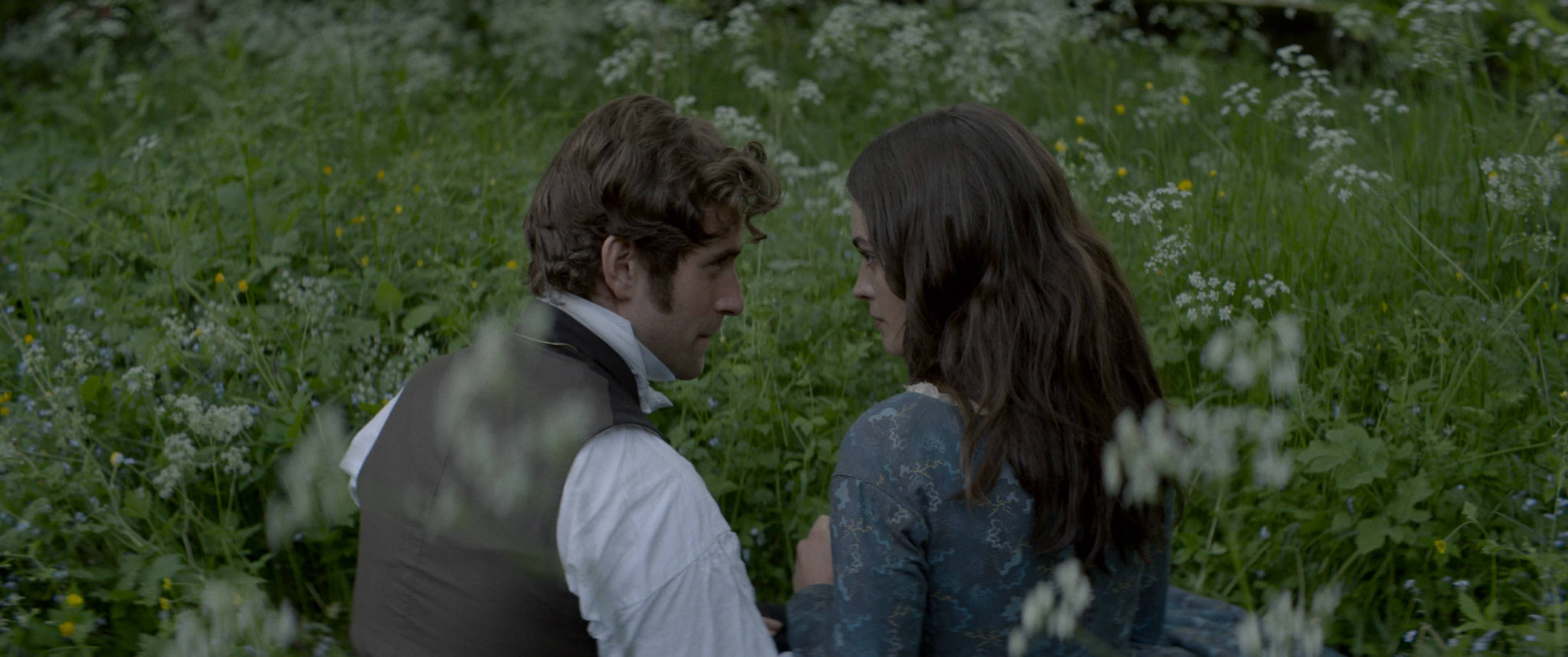In a month that has seen more than its fair share of chaos, I had hoped the release of the first-ever Emily Brontë biopic would at last offer some cause for celebration. But Emily, which arrived in cinemas this week, has provided quite the opposite.
Frances O’Connor’s directorial debut focuses on a fling between Emily (played by Emma Mackey) and her father Patrick’s dishy assistant curate William Weightman (Oliver Jackson-Cohen), suggesting that their racy romance inspired Wuthering Heights.
Not only is there no evidence that this relationship took place, but there are clues that it was actually the youngest of the sisters, Anne, who caught Weightman’s eye. Charlotte wrote that Weightman ‘sits opposite Anne in church sighing softly and looking out of the corners of his eyes to win her attention’. It seems the bond was reciprocal, too: it is likely that Edward Weston, the affable country parson hero of Anne’s first novel Agnes Grey (1848), was inspired by Weightman, and Anne wrote grief-stricken poetry following Weightman’s death in 1842 at the age of 28.
So why make a film about a passionate affair between Weightman and a different sister? No doubt a drama about Anne would have been a less commercially savvy choice. It is certainly unfair how routinely Anne’s place in history is derided, with the Guardian dismissing Helen Graham, the protagonist of her groundbreaking final novel The Tenant of Wildfell Hall, as a ‘goody-goody bore’. This is despite the character’s fierce principles, and eventual flight from an alcoholic spouse, upending the conventions of most marital depictions of the era. The novel also probably functioned as a daring comment on Lady Caroline Norton’s desperate bid to divorce the violent husband who accused her of adultery with the then Prime Minister Lord Melbourne.
It seems that popular culture refuses to bear witness to the past without forcing it to mirror our present permissive environment
Yet so much of Anne’s story is unfashionable material for a sexy screenplay. While progressive scholarship routinely misconstrues religiosity as a nefarious apparatus for reinforcing oppressive traditions, Helen and her creator’s faith functions as a principal source of strength as they encounter vice. So perhaps it is unsurprising that O’Connor substituted Anne for an outlandish caricature of her more famous sister, who the film then posits as a post-modern rebel against Weightman’s Christian sensibilities.
The film’s scenes of Emily dabbling with opium borderline on the offensive, particularly given the real-life trauma of her brother Branwell’s substance abuse, which ultimately proved fatal. These real-life events were a key inspiration for the dysfunctional characters of all three sisters’ fictional universes, including that of Wuthering Heights, and surely merit as much attention as make-believe affairs. It seems that popular culture refuses to bear witness to the past without forcing it to mirror our present permissive environment.
Aiming to be bold, Emily lazily returns to cinema’s long-running preoccupation with the shock value of sex and scandal. While O’Connor says that the film is ‘not intended to be completely accurate’, the reality is that most viewers will wrongly take its biographical nature as evidence of its broad alignment with fact.

O’Connor may be happy to admit that historians will be upset by the film’s liberal helping of artistic license, but she risks trivialising the dark and complex themes of Emily’s epic novel as a mere romance. Wuthering Heights delivers a suffocating portrait of familial abuse, addiction and the trappings of Georgian society. Cathy and Heathcliff’s connection is a dangerous example of psychologically incestuous obsession that wreaks intergenerational havoc, not the ‘kick-ass’ teenage rebelliousness of the director’s imagination.
The film also bizarrely papers over a very real episode that the Hindley-Heathcliff enmity may have been inspired by: a brutal feud over inheritance between the adopted Jack Sharp and his foster brother Richard. Emily probably heard tales of this from her chatty boss Miss Patchett during her 1838 stint teaching within a stone’s throw of the former Sharp homestead near Halifax.
Of course, when it comes to art, there is often no room for hand-wringing purity tests. Modern twists on old tales can be fruitful and fun. The 1995 film Clueless, for example, is a lively and enjoyable reinterpretation of Jane Austen’s Emma. However, it is surely one thing to reimagine an older story in a modern setting, and another to present sensational fiction as fact.
It is unfair to resurrect the memories of real people to promote inaccuracies about them for the sake of profit. O’Connor’s decision to shoehorn Emily into an illicit dalliance before drafting her best work also snidely implies that she could not possibly have been a truly liberated creative if she was chaste – no doubt an impression the likes of St Thomas Aquinas and Sir Isaac Newton would find fault with. It also plays into the misconception that a story as powerful as Wuthering Heights could not possibly have come just from her imagination, and must have drawn on experience.
O’Connor’s aim of acquainting a broader audience with the Brontë genius is laudable. But wouldn’t a better way of achieving this be encouraging more people to read the sisters’ work, rather than promoting damaging falsehoods about their tragically brief lives?







Comments